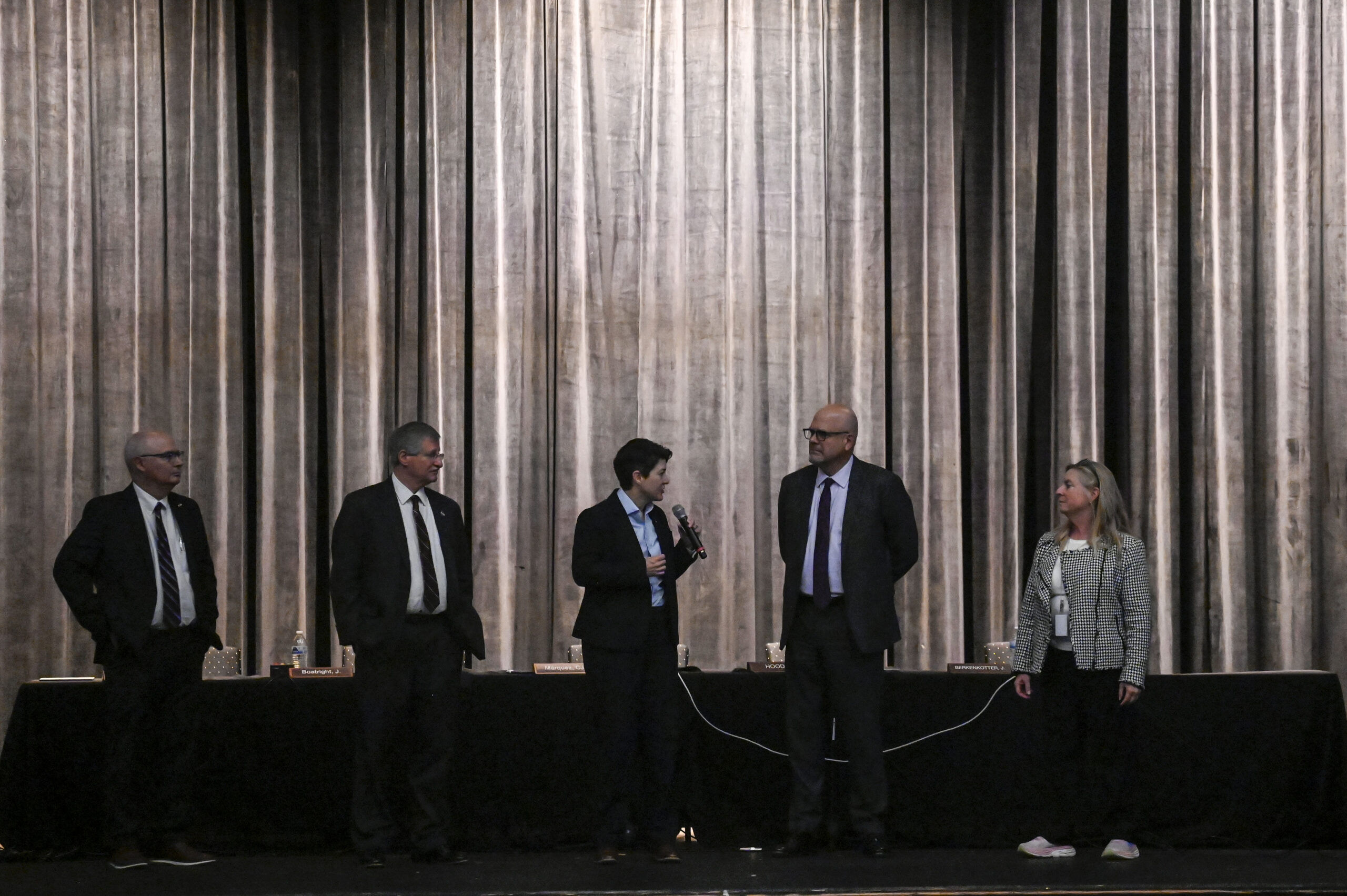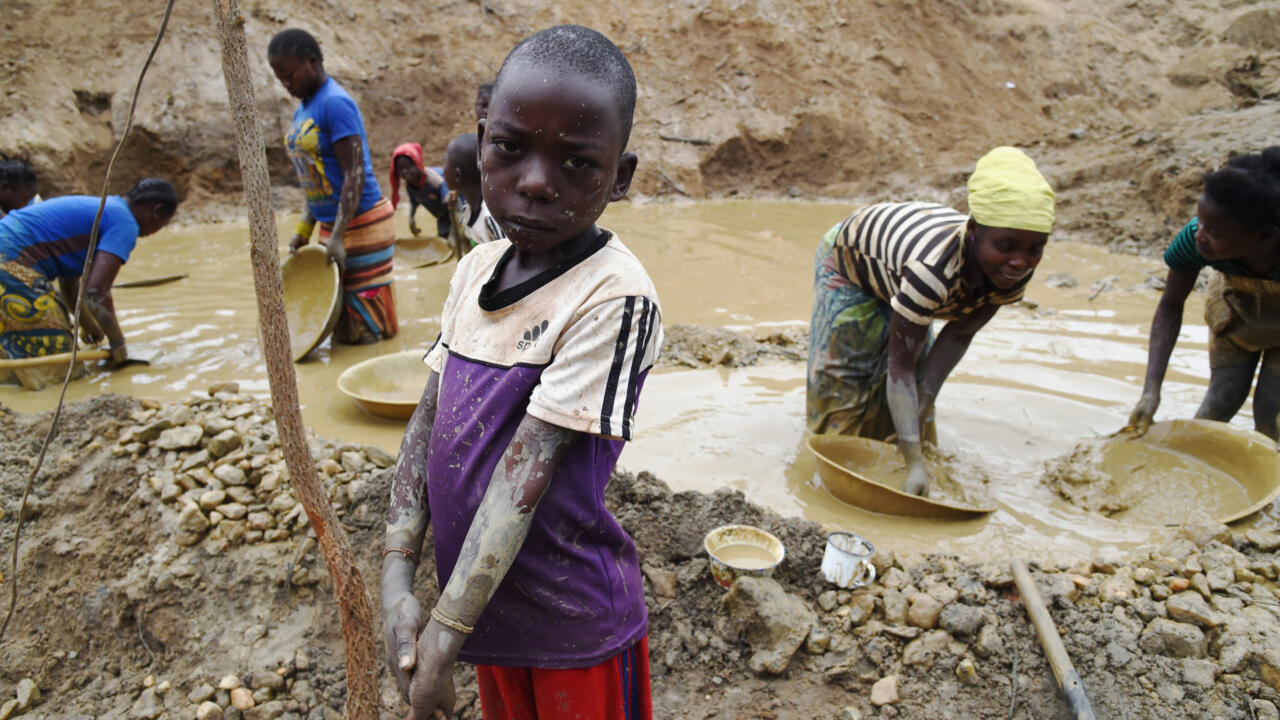Colorado Supreme Court suspends rules for ‘Indian child’ welfare cases – Colorado Politics

Report on Colorado’s Judicial and Legislative Actions to Strengthen Indigenous Child Welfare Protections
Introduction: Aligning State Law with Global Goals for Justice and Equality
The Colorado Supreme Court has suspended its judicial rules governing child custody cases involving American Indian children. This decision, effective November 6, follows the enactment of comprehensive new state legislation designed to provide enhanced protections for tribal children and families. This report analyzes these developments through the lens of the United Nations Sustainable Development Goals (SDGs), particularly SDG 16 (Peace, Justice and Strong Institutions) and SDG 10 (Reduced Inequalities), highlighting the state’s efforts to create more effective, accountable, and inclusive legal frameworks.
Legislative Context and Alignment with Sustainable Development Goals
Background: Addressing Historical Injustices through the Indian Child Welfare Act (ICWA)
The legal framework for these cases is rooted in the federal Indian Child Welfare Act (ICWA) of 1978. This legislation was a direct response to systemic failures that disproportionately harmed Indigenous communities, a clear violation of principles outlined in SDG 10 and SDG 3 (Good Health and Well-being).
- ICWA was enacted to address the historically high rate of American Indian children being removed from their families and placed in non-tribal homes, a practice that led to the erosion of cultural identity and community bonds.
- The Act establishes federal standards for child custody proceedings, requiring states to prioritize keeping Indigenous children with their families and tribes, thereby promoting well-being (SDG 3) and protecting cultural heritage.
- The need for such protections underscores the deep-seated inequalities (SDG 10) faced by Indigenous peoples within state justice systems.
Colorado’s Legislative Response: House Bill 1204
In 2025, Colorado lawmakers passed House Bill 1204, a measure that strengthens and codifies protections for Indigenous children at the state level. This legislative action is a significant step toward building stronger institutions (SDG 16) that are responsive to the needs of all citizens.
- Proactive Codification: The bill was initially passed to enshrine federal ICWA protections into state law, safeguarding them against potential challenges at the U.S. Supreme Court.
- Correcting Judicial Interpretations: The legislation was specifically aimed at correcting recent Colorado Supreme Court rulings that had been perceived as narrowing the scope of ICWA’s protections. This ensures that the justice system provides non-discriminatory access to justice for all, a key target of SDG 16.
- Strengthening Protections: According to legal experts, the new Colorado law provides substantially increased protections beyond the federal ICWA, demonstrating a commitment to reducing systemic inequalities (SDG 10).
Judicial System Adaptation and Institutional Reform
Suspension of Judicial Rules for Coherency and Efficacy
The Colorado Supreme Court’s decision to suspend its existing ICWA rules is a direct consequence of the new, more comprehensive state statute. This move reflects an adaptive judicial process committed to clarity and the effective rule of law, in line with SDG 16.
- Justice Richard L. Gabriel confirmed that the court acted on the recommendation of its ICWA subcommittee, which raised concerns about potential conflicts between the old rules and the new law.
- The suspension ensures that the newly enacted statute is the primary governing authority, preventing legal confusion and promoting consistent application of the law.
- An ICWA subcommittee will continue to evaluate the legal landscape to determine if any new, supplementary rules are necessary to fill potential gaps in the statute, further contributing to the development of effective and accountable institutions.
Stakeholder Consensus on Enhanced Protections
Legal stakeholders involved in child welfare cases have expressed support for the changes, viewing them as a positive development for protecting the rights and well-being of Indigenous families.
- The Office of Respondent Parents’ Counsel (ORPC) stated that the new Colorado ICWA provides “substantially increased protections” and did not anticipate problems from the rules suspension.
- The Office of the Child’s Representative noted that the old rules were primarily a resource for practitioners and their suspension does not represent a substantive change in law, as the more protective statute now governs.
Conclusion: Advancing Sustainable Development Goals through State-Level Legal Reform
The coordinated actions of the Colorado legislature and Supreme Court exemplify a robust commitment to advancing several key Sustainable Development Goals. By reforming its legal framework for Indigenous child welfare, the state has taken concrete steps to build a more just, equitable, and inclusive society.
- SDG 16 (Peace, Justice and Strong Institutions): The state has strengthened its legal institutions by creating a clear, comprehensive statute and aligning its judicial procedures to support it, ensuring more effective and accountable justice for a vulnerable population.
- SDG 10 (Reduced Inequalities): The new law directly confronts and aims to mitigate the historical and systemic inequalities faced by American Indian families in the child welfare system.
- SDG 3 (Good Health and Well-being): By prioritizing the preservation of family and cultural ties, the legal reforms support the long-term mental and physical well-being of Indigenous children.
Analysis of Sustainable Development Goals in the Article
1. Which SDGs are addressed or connected to the issues highlighted in the article?
-
SDG 10: Reduced Inequalities
- The article focuses on legal protections for “Indian child” welfare cases, addressing the specific vulnerabilities and historical injustices faced by American Indian children and families. The creation of Colorado-specific legislation aims to reduce inequalities in the child welfare system by ensuring the rights and cultural heritage of a specific ethnic group are protected. The article notes that the original federal Indian Child Welfare Act (ICWA) was enacted because “states were removing large numbers of American Indian children from their households into non-tribal families and institutions.”
-
SDG 16: Peace, Justice and Strong Institutions
- The core of the article discusses the legal and judicial systems, including the Colorado Supreme Court, state legislature, and specific laws (ICWA and House Bill 1204). It highlights the process of creating, interpreting, and implementing laws to ensure justice and protection for children. The suspension of old judicial rules in favor of a new, more comprehensive statute demonstrates an effort to build effective, accountable, and inclusive institutions that provide equal access to justice.
2. What specific targets under those SDGs can be identified based on the article’s content?
-
Under SDG 10: Reduced Inequalities
-
Target 10.2: By 2030, empower and promote the social, economic and political inclusion of all, irrespective of age, sex, disability, race, ethnicity, origin, religion or economic or other status.
- The article discusses the enactment of House Bill 1204 to provide “Colorado-specific protections for tribal children and families in custody matters.” This legislation is a direct effort to ensure the inclusion and protection of a specific ethnic group (American Indian children) within the state’s legal and social welfare systems, correcting for past practices that led to their disproportionate removal from their families.
-
Target 10.3: Ensure equal opportunity and reduce inequalities of outcome, including by eliminating discriminatory laws, policies and practices and promoting appropriate legislation, policies and action in this regard.
- The article explains that HB 1204 was aimed in part at “overturning recent state Supreme Court decisions interpreting ICWA’s requirements” which were seen as “narrow rulings.” By creating a new state law that provides “substantially increased protections,” Colorado is actively promoting legislation to eliminate practices that led to unequal outcomes for tribal families.
-
Target 10.2: By 2030, empower and promote the social, economic and political inclusion of all, irrespective of age, sex, disability, race, ethnicity, origin, religion or economic or other status.
-
Under SDG 16: Peace, Justice and Strong Institutions
-
Target 16.2: End abuse, exploitation, trafficking and all forms of violence against and torture of children.
- The historical context provided in the article—that states were “removing large numbers of American Indian children from their households… accounting for up to 35% of tribal children”—describes a form of systemic harm against children. The federal ICWA and the new Colorado law are designed to prevent this harmful practice and protect children by keeping them with their families and tribes whenever possible.
-
Target 16.3: Promote the rule of law at the national and local levels and ensure equal access to justice for all.
- The entire article revolves around the rule of law. The Colorado Supreme Court’s decision to suspend its rules because “the statute now governs” shows a commitment to a clear legal framework. The new law (HB 1204) was created to clarify and strengthen protections, ensuring that American Indian families have better and more equal access to justice in child welfare cases.
-
Target 16.2: End abuse, exploitation, trafficking and all forms of violence against and torture of children.
3. Are there any indicators mentioned or implied in the article that can be used to measure progress towards the identified targets?
- Proportion of children removed from their households: The article mentions a historical statistic that “up to 35% of tribal children” were being removed from their households. This serves as a baseline indicator of the problem. A reduction in the proportion of American Indian children removed from their families in Colorado following the implementation of HB 1204 would be a key indicator of progress toward Target 16.2.
- Adoption of non-discriminatory legislation: The passage and enactment of “House Bill 1204” is a direct and measurable indicator. This demonstrates that the state has a legal framework in place to protect the rights of indigenous children, aligning with the goal of Target 10.3 to promote appropriate legislation.
- Institutional reform and rule changes: The formal order by the Colorado Supreme Court to suspend its ICWA rules, as mentioned by Justice Richard L. Gabriel, is an indicator of institutional responsiveness. This action shows that the judicial branch is adapting to legislative changes to ensure a coherent and just application of the law, which is relevant to measuring progress on Target 16.3.
4. Table of SDGs, Targets, and Indicators
| SDGs | Targets | Indicators |
|---|---|---|
| SDG 10: Reduced Inequalities |
10.2: Promote the social inclusion of all, irrespective of origin.
10.3: Ensure equal opportunity and reduce inequalities of outcome by eliminating discriminatory policies and promoting appropriate legislation. |
The enactment of House Bill 1204 as a state-level law to provide “Colorado-specific protections for tribal children and families.”
The legislative action to overturn “narrow rulings” from the state Supreme Court that afforded a lower degree of protection. |
| SDG 16: Peace, Justice and Strong Institutions |
16.2: End abuse, exploitation… and all forms of violence against… children.
16.3: Promote the rule of law… and ensure equal access to justice for all. |
The historical statistic of “up to 35% of tribal children” being removed from their homes, which serves as a baseline to measure reduction of this harmful practice.
The Colorado Supreme Court’s order to suspend its judicial rules in favor of the new statute, indicating institutional adaptation to strengthen the rule of law. |
Source: coloradopolitics.com
What is Your Reaction?
 Like
0
Like
0
 Dislike
0
Dislike
0
 Love
0
Love
0
 Funny
0
Funny
0
 Angry
0
Angry
0
 Sad
0
Sad
0
 Wow
0
Wow
0















































/environment-climate-change-and-health-(ech)/water-sanitation-hygiene-and-health-(wsh)/landfill-tuvalu-36092.tmb-1200v.jpg?sfvrsn=5c21fe40_1#)


.jpg.webp?itok=0ZsAnae9#)

























